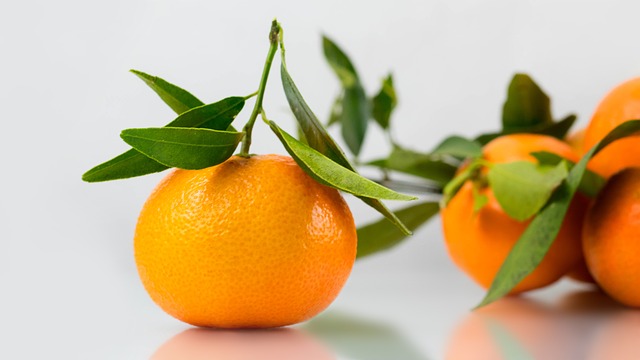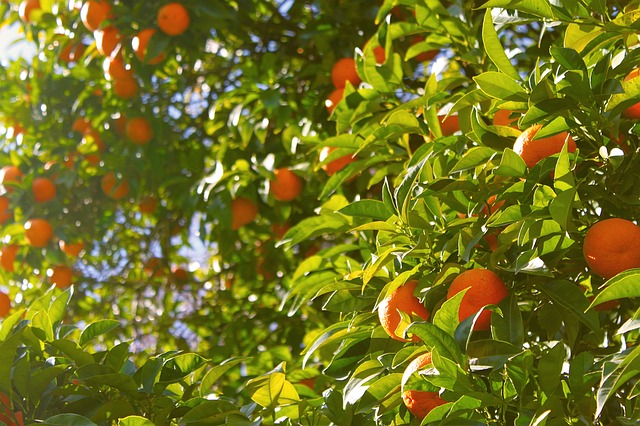Mandarine Oranges/Southern California

Gardening Question from Sari:
What kinds of soils would you recommend for growing MANDARINE ORANGES near the beach in Southern California? Are there any special additives you would suggest? We’re having a leaf curl problem.

Answer from Pat:
Citrus trees are not fussy about soils but they do like well-drained soil. Soils near the beach are usually sandy and thus drainage is usually not a problem. The main problems with sandy soil are that sand drains so quickly it dries out faster than other soils. Additionally nutrients are not held in the soil either. I would recommend that you amend the soil by keeping a layer of organic mulch on top of the ground over the roots of your mandarine orange tree, and this will gradually decompose and add organic matter to the soil. You will perhaps need to water more often in sandy soil. Make sure you are watering enough to maintain moisture in the soil but never let it be soggy wet.
The most important thing you can do for citrus trees in January is to feed them. Purchase a bag of organic fertilizer recommended for citrus trees and fertilize according to package directions. Usually I suggest that citrus trees be fertilized in late January but organic fertilizers require more time to take action. Therefore you can fertilize with organic fertilizers earlier in the month and continue a schedule of feeding throughout warm weather until fall. A well-fed tree can fight off pests quicker than a tree that is starved for nutrients, as your tree most likely is. The main reason for feeding in January is that citrus trees bloom in February, so the fertilizer helps produce plenty of blooms and later growth of fruit and leaves. Feeding the tree will also help it fight off pests. Curled leaves will fall off as they get old and new healthy ones will grow.
Nine times out of ten, aphids are the main problem causing leaf curl on citrus. Get rid of the ants that are bringing aphids, fertilize (as I’ve already recommended), wash the tree with soapy water, apply ladybugs at night low on the plant as I describe in my book and you will surely have a healthy tree this year free from leaf curl. Other pests such as whitefly, citrus leaf miners, and citrus leaf rollers, can cause leaf curl. Old leaves sometimes curl prior to falling off. Watering too much or too little can also cause leaves to become deformed. Most likely however the problem is pests that are being brought it by ants.There are some new exotic pests of citrus also that can cause leaf curl. In a home garden the best defense is to build up the health of the tree and keep it clean. Washing off a tree with fatty acid soaps can do a world of good and then let the tree fight off the pests by building up its health and strength with adequate fertilizer. If leaves are curled and no pests are in sight this could be due to lack of nutrients or even a virus. But all these problems are minimized in a properly watered and fed tree.
For more details, I recommend you read and follow the recommendations in the sections on citrus trees in the January and February chapters of my organic book which will provide you with loads of specific advice on feeding and pest control of citrus.


I planted a Golden Nugget Mandarin tree about 3 years ago. It is planted in full sun, grown tall and full, but no fruit. I fertilize it 2 times a year. I wonder what I am doing wrong or lacking?
It sometimes takes a few years for a mandarin orange to begin bearing fruit. Additionally many home grown citrus trees are starved for nutrients. Feed your tree in January and if using a boxed organic fertilizer recommended for citrus, apply more than package directions suggest, not less. Whereas inorganic (ie: chemical) fertilizers can be used in late January, organic fertilizers can be applied earlier since they are slower to act, so apply the fertilizer in mid January.
Spread the fertilizer under the drip line and under the canopy of leaves, but not within one foot of the trunk. Unless rains are adequate, water deeply after fertilizing. Be very sure never to cultivate or disturb the ground under the tree since feeder roots are close to the surface. If there are weeds, pull them up but never dig them out and never used a hoe or weeder. After spreading the fertilizer, cover the ground with organic mulch. Look for flowers in February and if there are no bees, hand pollinate the flowers as I have described several times elsewhere in my advice on citrus trees.